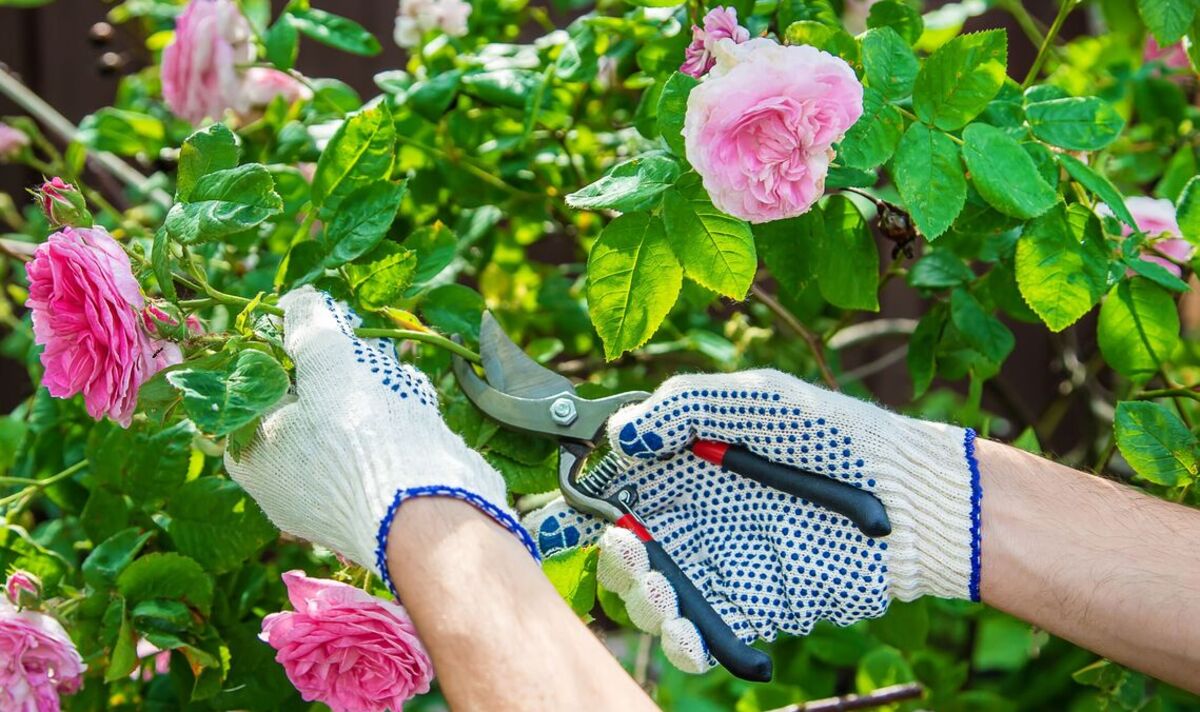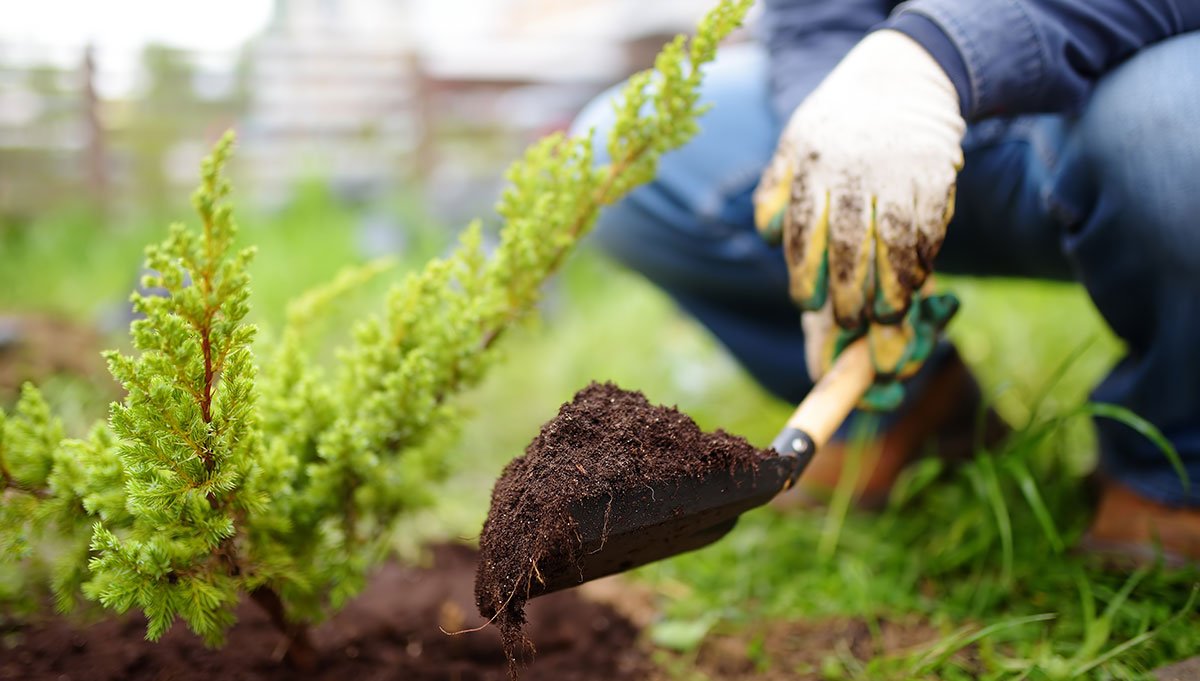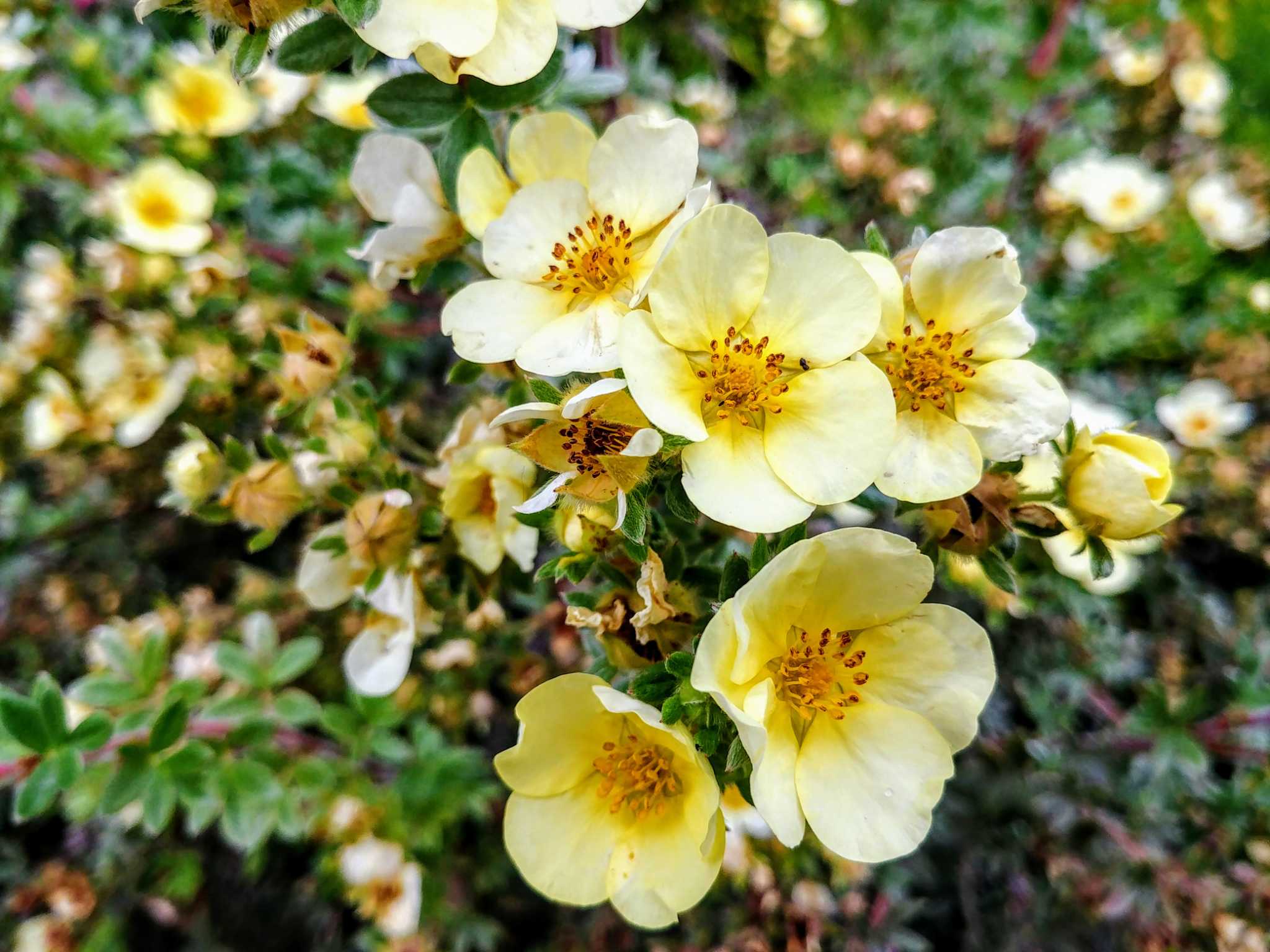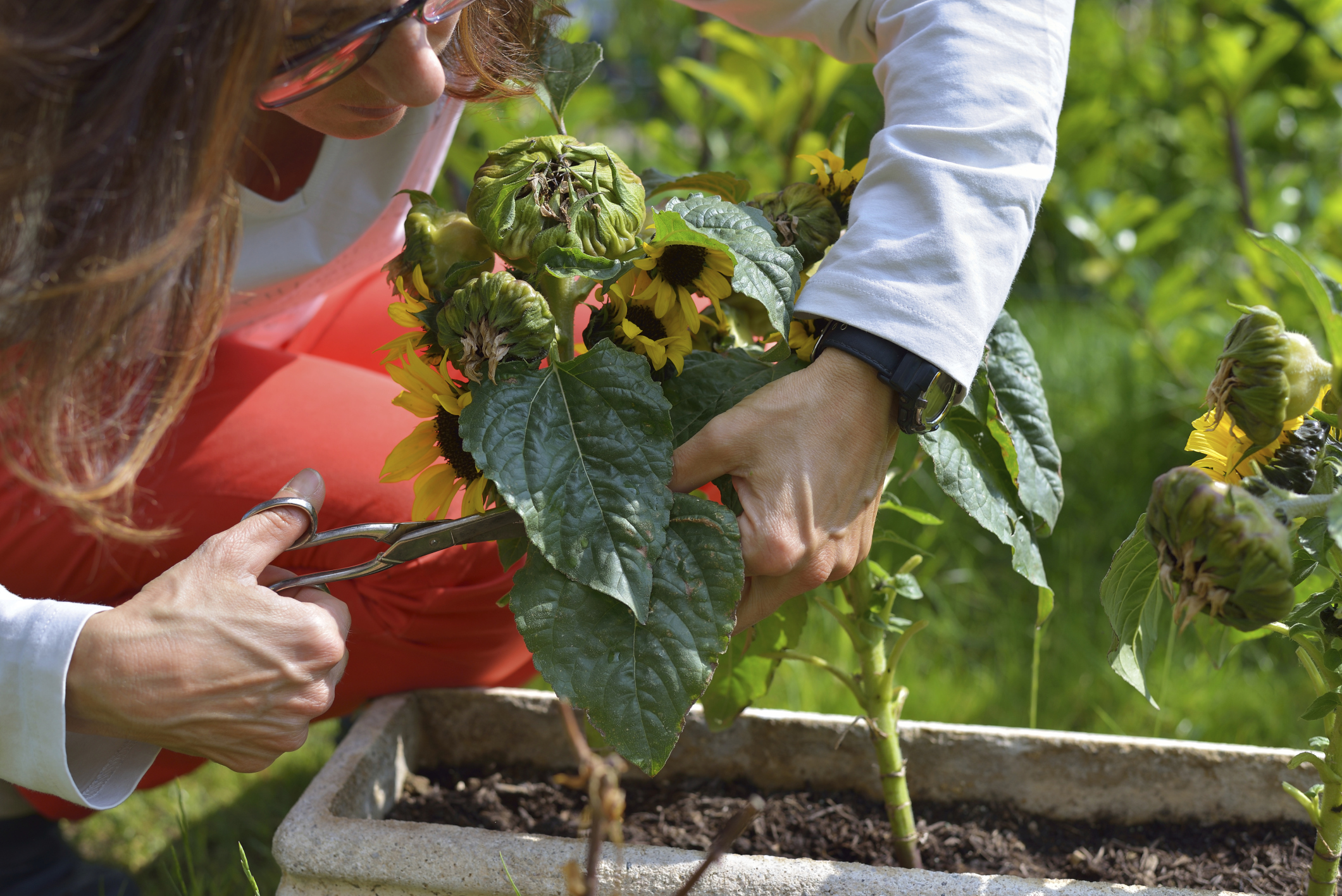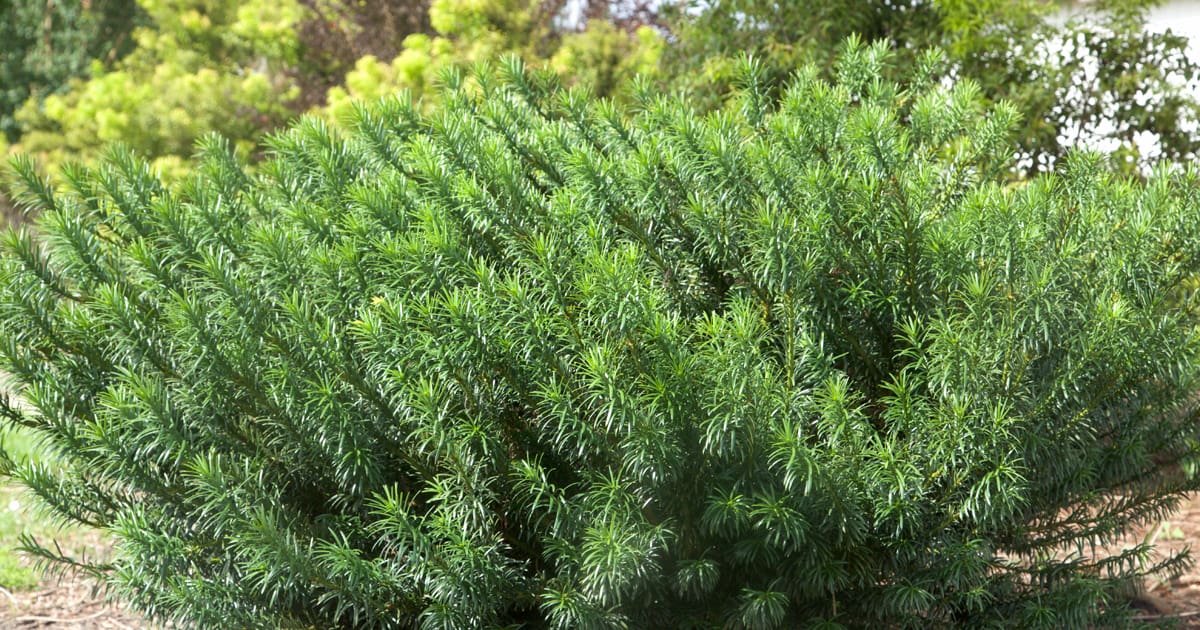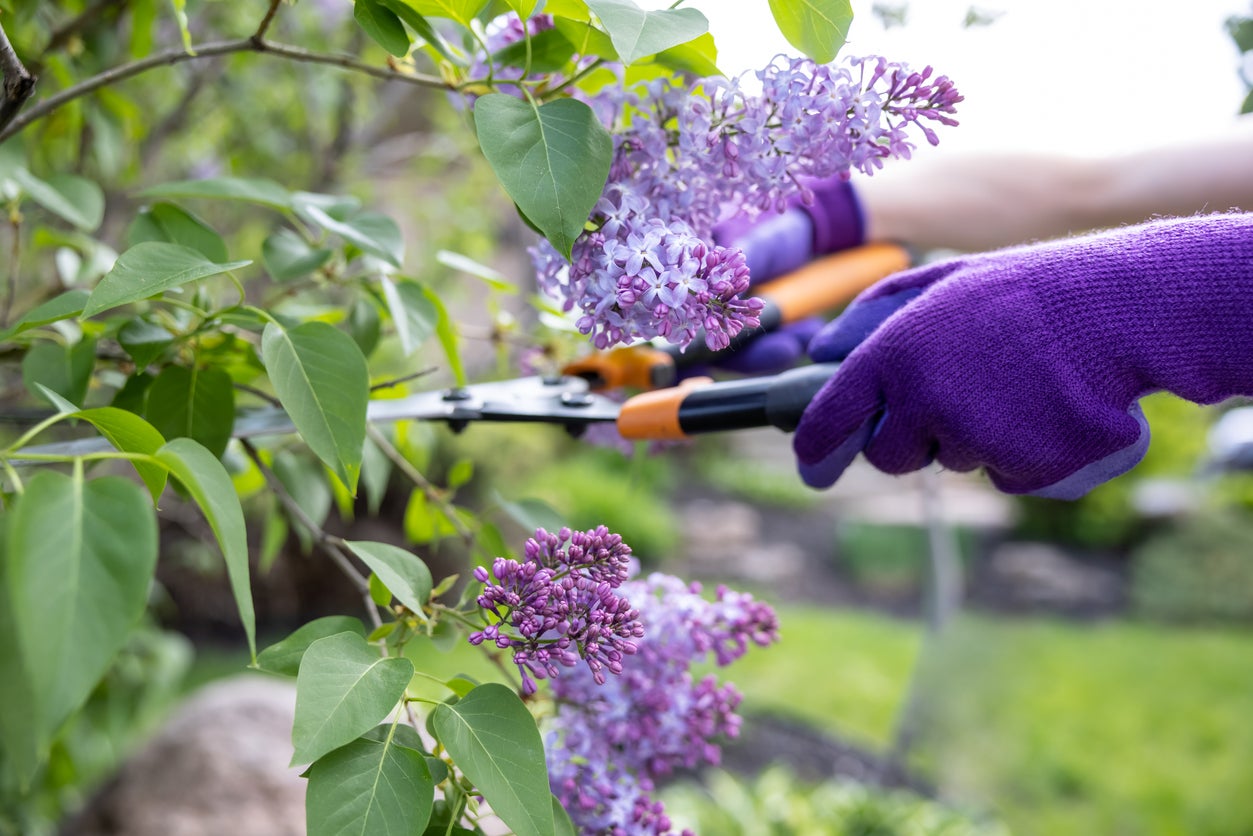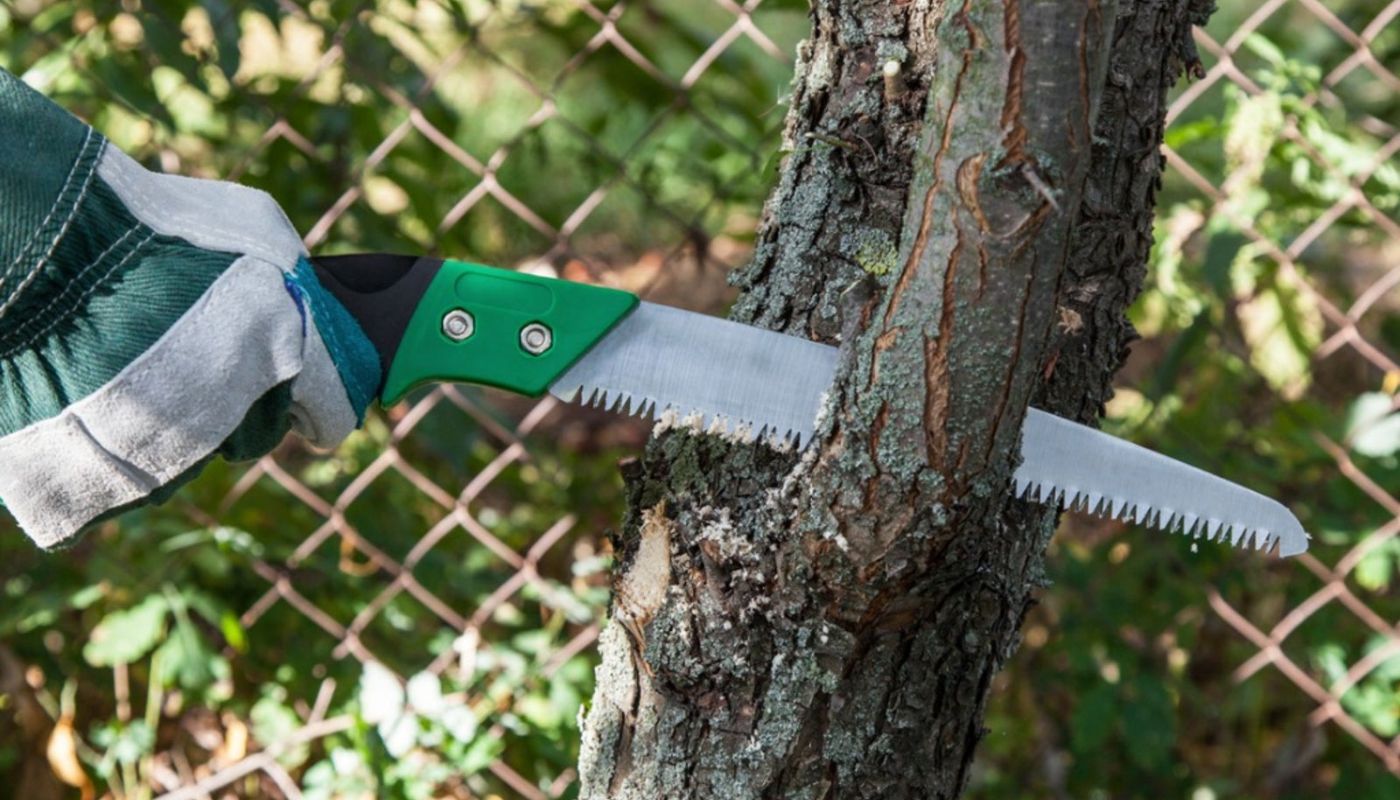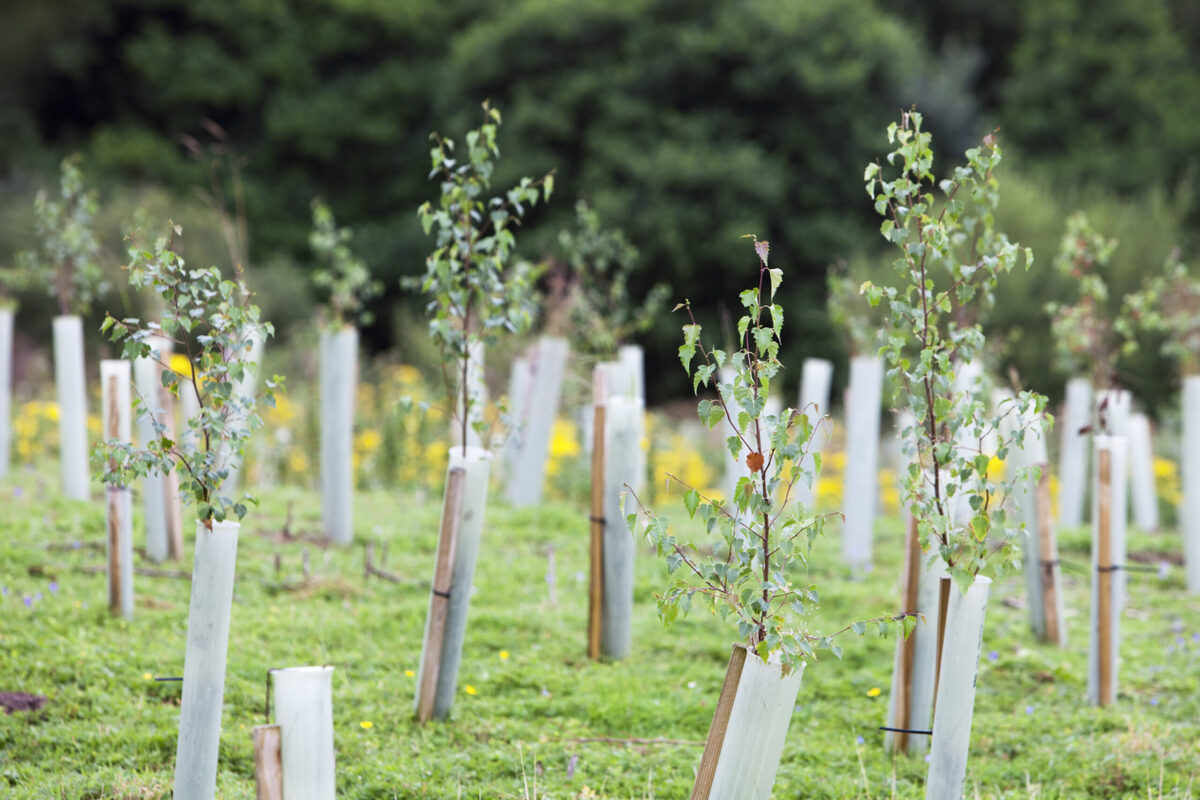Home>Gardening Techniques>Plant Care>When Do You Prune Barberry Shrubs
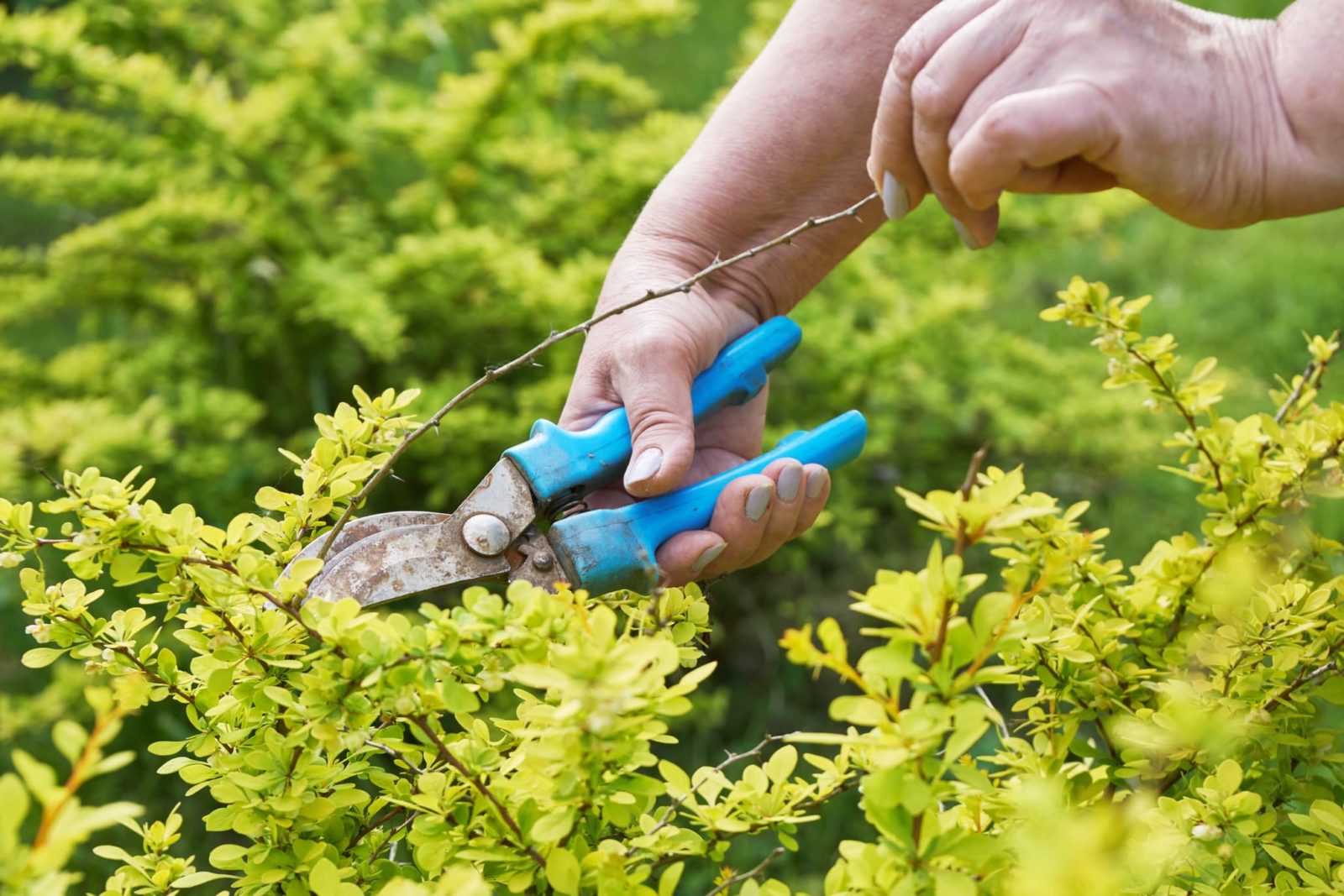

Plant Care
When Do You Prune Barberry Shrubs
Modified: January 22, 2024
Learn the best time and techniques for pruning barberry shrubs with this comprehensive guide. Ensure your plant care routine keeps your barberry shrubs thriving.
(Many of the links in this article redirect to a specific reviewed product. Your purchase of these products through affiliate links helps to generate commission for Chicagolandgardening.com, at no extra cost. Learn more)
Table of Contents
Introduction
Welcome to the world of barberry shrubs! Whether you are a seasoned gardener or just starting out, understanding how and when to prune your barberry shrubs is crucial for maintaining their health and enhancing their beauty. Pruning plays a vital role in shaping the shrubs, promoting new growth, and ensuring they stay manageable in size.
Barberry shrubs (genus Berberis) are versatile, easy-to-care-for plants that offer a range of colors, sizes, and shapes. With their vibrant foliage and thorny stems, they make for stunning additions to any garden or landscape. However, if left unpruned, these shrubs can become overgrown and lose their aesthetic appeal.
In this article, we will explore the best time to prune your barberry shrubs, the tools you’ll need, and the step-by-step process to follow. Additionally, we will discuss specific pruning techniques for different barberry varieties and offer some tips for post-pruning care.
Before we dive into the details, it’s important to note that pruning barberry shrubs requires a delicate balance. While you want to ensure they maintain their desired shape and size, it’s important not to over-prune, as this can weaken the plant and hinder its ability to thrive. By following the guidelines and techniques in this article, you will be able to achieve a well-maintained and visually pleasing barberry shrub.
So, if you’re ready to learn the art of pruning barberry shrubs, grab your gardening gloves and let’s get started on this green-thumb journey together!
Understanding Barberry Shrubs
Before we delve into the intricacies of pruning barberry shrubs, let’s take a moment to understand these remarkable plants. Barberry shrubs belong to the genus Berberis and are native to various regions around the world, including Europe, Asia, and North America. They are known for their distinct features, including thorny stems and colorful foliage.
Barberry shrubs come in a wide range of varieties, each displaying unique characteristics. From dwarf varieties that reach only a few feet in height to larger, more sprawling cultivars, there is a barberry shrub to suit every garden and landscape.
One of the most notable features of barberry shrubs is their foliage. They boast an array of colors, ranging from deep burgundy to vibrant gold, and everything in between. This foliage not only provides visual interest but also adds a stunning contrast to the greenery in your garden.
In addition to their aesthetic appeal, barberry shrubs offer several practical benefits. Their thorny stems act as a natural deterrent, making them an excellent choice for creating hedges or barriers to keep out unwanted intruders. Furthermore, barberry plants produce small flowers in the spring and colorful berries in the fall, attracting birds and other wildlife to your garden.
When it comes to growing barberry shrubs, they are relatively low-maintenance and adaptable to various soil conditions. They thrive in well-draining soil and can tolerate both full sun and partial shade. Additionally, barberry shrubs are known for their resilience and ability to withstand drought and harsh weather conditions.
While barberry shrubs are generally hardy plants, they are susceptible to certain pests and diseases. Keep an eye out for common issues such as aphids, spider mites, and fungal infections. Regular maintenance, including pruning, can help prevent and manage these potential problems.
Now that you have a solid understanding of barberry shrubs and their characteristics, it’s time to explore the optimal time for pruning to ensure their continued health and beauty.
Factors to Consider
Before you grab those pruning shears and start snipping away at your barberry shrubs, there are several key factors you need to consider. These factors will help you determine the best approach to pruning and ensure the long-term health and vitality of your plants.
1. Growth Pattern: Understanding the natural growth pattern of the specific barberry variety you have is crucial. Some varieties have a more upright growth habit, while others tend to sprawl. Knowing this will guide you in shaping the shrub and maintaining its desired form.
2. Purpose of Pruning: Consider why you are pruning your barberry shrubs. Is it to remove dead or diseased branches? Or are you aiming to control the size and shape of the shrub? Having a clear purpose in mind will help you determine which pruning techniques to use.
3. Timing: Timing is everything when it comes to pruning barberry shrubs. Different varieties have varying pruning requirements, so it’s crucial to know the specific needs of your plants. Pruning at the wrong time can interfere with flowering or berry production, leading to a less vibrant and visually appealing shrub.
4. Climate and Season: Consider the climate and the current season when planning your pruning schedule. In general, it is best to prune barberry shrubs during their dormant season, typically in late winter or early spring before new growth begins. However, some varieties may have specific timing requirements, such as pruning after they have finished flowering.
5. Overall Health: Assess the overall health of your barberry shrubs before pruning. If you notice signs of disease or pests, address those issues before proceeding with pruning. Removing diseased or damaged branches will help promote the overall health and vigor of the shrub.
Keep in mind that barberry shrubs are resilient and can tolerate moderate pruning. However, it is crucial not to over-prune, as this can weaken the plant and hinder its ability to recover. By taking these factors into consideration, you will be well-equipped to make informed decisions and ensure the successful pruning of your barberry shrubs.
Best Time for Pruning
Timing is crucial when it comes to pruning barberry shrubs. Pruning at the right time ensures that you promote healthy growth, maintain the desired shape, and enhance the overall beauty of the plant. While specific timing may vary depending on the variety of barberry you have, there are some general guidelines to follow.
The best time to prune barberry shrubs is during their dormant season, which is typically in late winter or early spring. Pruning during this time allows the shrub to recover and put energy into new growth as the weather warms up. It is essential to prune before new buds start to form, as this can affect the flowering and overall health of the shrub.
However, there are a few exceptions to this general rule. Some barberry varieties, such as the Japanese barberry (Berberis thunbergii), produce flowers in the spring. For these varieties, it is best to prune immediately after flowering to avoid cutting off potential blooms. This timing ensures that you can enjoy the blossoms while still maintaining the shape and size of the shrub.
When pruning barberry shrubs, it is essential to strike a balance between removing excessive growth and preserving enough branches to support a healthy plant. Aim to remove about one-third of the branches while avoiding cutting too close to the main stem.
Regular pruning will help shape the shrub and prevent it from becoming overgrown and tangled. It also encourages air circulation, which reduces the risk of diseases and pests. By pruning during the optimal time, you can maximize the benefits and longevity of your barberry shrubs.
In some cases, you may need to do a little touch-up pruning throughout the growing season. This involves removing any dead, damaged, or diseased branches as soon as you notice them. Prompt removal of these branches helps maintain the overall health and appearance of your barberry shrubs.
By carefully considering the specific variety, climate, and health of your plants, you can determine the best time for pruning your barberry shrubs. Remember to be patient and take your time to ensure you achieve the desired results while preserving the natural beauty of these remarkable plants.
Tools and Equipment Needed
Having the right tools and equipment is essential for successful pruning of your barberry shrubs. These tools will help you make clean cuts and maintain the health and appearance of your plants. Here are some of the essential tools you’ll need:
- Pruning Shears: Also known as hand pruners or secateurs, pruning shears are a must-have for any gardener. Look for a pair with sharp, bypass blades that can easily cut through branches up to ¾ inch thick. Avoid anvil-style shears, as they tend to crush the branches rather than making clean cuts.
- Loppers: Loppers are larger, long-handled pruners designed to tackle branches up to 2 inches thick. They provide more leverage and reach, making them ideal for cutting thicker branches that are out of reach for hand pruners.
- Pruning Saw: For larger branches, a pruning saw is a valuable tool. Look for a handheld pruning saw with a curved blade and sharp teeth that can easily cut through branches up to 4 inches thick. Pruning saws are especially useful for removing old or thick branches that may be difficult to reach with loppers.
- Handheld Hedge Shears: If you have barberry shrubs that require shaping or hedge trimming, handheld hedge shears are essential. Choose a pair with sharp blades that can easily trim and shape the shrub’s foliage. It is important to keep the blades of hedge shears clean and sharp to avoid damaging the plants.
- Gloves: Pruning can be a messy task, so it’s important to protect your hands. Invest in a pair of sturdy gardening gloves that provide both protection and dexterity. Choose gloves made from durable materials that can withstand thorns and sharp edges.
- Protective Eyewear: Pruning involves working with branches and foliage that may release debris and small particles. To protect your eyes from potential harm, wear safety glasses or goggles while pruning.
- Disinfectant: To prevent the spread of diseases, it is crucial to disinfect your pruning tools before and after each use, especially when working on different plants. Use a solution of 10% bleach or rubbing alcohol to clean the blades of your tools.
Having the right tools and equipment not only ensures a smooth pruning process but also helps you achieve clean cuts that promote the health and growth of your barberry shrubs. Remember to maintain your tools by cleaning and sharpening them regularly to ensure their effectiveness.
Step-by-Step Pruning Guide
Now that you have the necessary tools and understanding of the best time to prune, let’s dive into the step-by-step process for pruning your barberry shrubs.
- Inspect the shrub: Begin by closely examining your barberry shrub. Look for any dead, damaged, or diseased branches that need to be removed. Also, take note of the overall shape and size of the shrub and identify any specific areas that require shaping or thinning.
- Start with the 3 D’s: Focus on removing branches that fall under the three D’s category: dead, dying, and diseased. These branches not only detract from the overall appearance of the shrub but can also pose a risk to its health and vitality. Use pruning shears or loppers to make a clean cut just above a healthy bud or side branch.
- Thin the interior: Barberry shrubs tend to have dense foliage, which can hinder air circulation and sunlight penetration. To promote better growth and overall health, thin out the interior of the shrub by selectively removing branches. This will also help maintain a more open and balanced appearance. Remember to step back occasionally to assess the impact of your pruning decisions.
- Shape the shrub: If you desire a specific shape or size for your barberry shrub, now is the time to shape it. Use handheld hedge shears, loppers, or hand pruners to carefully trim the outermost branches and provide the desired form. Take your time and make small cuts, stepping back frequently to evaluate the progress.
- Consider the natural growth habit: When shaping your barberry shrub, keep in mind its natural growth habit. Work with the natural form of the plant and avoid drastic pruning that may compromise its overall health and vigor. Make cuts just above a healthy bud or side branch, angling the cut slightly away from the bud.
- Remove any suckers: Barberry shrubs often produce suckers, which are new growth shoots that emerge from the base or roots. These suckers can divert energy from the main shrub and compromise its overall health. To maintain the vitality of the plant, remove any suckers by cutting them off at the base.
- Clean and disinfect your tools: After you’ve finished pruning, it’s important to clean and disinfect your tools to prevent the spread of diseases. Use a solution of 10% bleach or rubbing alcohol to wipe the blades of your pruning shears, loppers, and saws. This will help ensure the health of your future pruning endeavors.
Remember, the key to successful pruning is moderation. Avoid over-pruning your barberry shrub, as this can weaken the plant and hinder its ability to recover. Regular, light pruning is generally sufficient to maintain the health and aesthetics of your shrub.
By following this step-by-step pruning guide, you will be able to shape and maintain your barberry shrub to enhance its beauty and promote optimal growth.
Pruning Techniques for Different Barberry Varieties
While the basic principles of pruning apply to all barberry shrubs, it’s important to note that different varieties may have specific pruning requirements. Understanding the unique characteristics of your specific barberry variety will help you implement the most effective pruning techniques. Here are some guidelines for common barberry varieties:
- Japanese Barberry (Berberis thunbergii): Japanese barberry is a popular variety known for its vibrant foliage. It is best pruned in late spring or immediately after flowering. Remove any dead, damaged, or diseased branches, as well as crossed branches or those that disrupt the overall shape. To maintain the shrub’s compact form, trim back any long shoots. Japanese barberry can tolerate moderate to heavy pruning.
- Redleaf Japanese Barberry (Berberis thunbergii ‘Atropurpurea’): The Redleaf Japanese barberry variety is prized for its deep red foliage. Prune in late winter or early spring before new growth starts. Remove any dead or damaged branches, and thin out the interior to improve air circulation. Avoid extensive pruning, as it may diminish the vibrant color of the foliage.
- Korean Barberry (Berberis koreana): Korean barberry is a compact variety with attractive leaf patterns. It is best pruned in early spring before new growth appears. Use selective pruning to remove any dead or weak branches and to thin out crowded areas. Korean barberry does not require heavy pruning and is generally easy to maintain.
- Globe Barberry (Berberis thunbergii ‘Globosa’): Globe barberry is a dwarf variety known for its rounded shape and dense foliage. Prune in early spring before new growth begins. Use pruning shears or hand pruners to selectively remove any dead or damaged branches. Because of its naturally compact form, minimal pruning is required to maintain its shape.
- Crimson Pygmy Barberry (Berberis thunbergii ‘Crimson Pygmy’): Crimson Pygmy is a popular low-growing barberry variety. Prune in early spring before new growth emerges. Remove any dead or diseased branches, and trim back any long shoots to maintain the desired size and shape. Minimal pruning is needed, as the natural growth habit of this variety is compact.
These are just a few examples of the different barberry varieties and their specific pruning requirements. It’s important to research and understand the needs of your specific variety to ensure you are implementing the correct pruning techniques.
Always remember to step back and assess the shrub’s overall shape and health as you prune. Take your time and make deliberate cuts to maintain the natural beauty and vitality of your barberry shrub. With proper pruning techniques, you can help your barberry shrubs thrive and create a visually stunning landscape.
Post-Pruning Care
Once you have completed the pruning process for your barberry shrubs, it’s important to provide them with post-pruning care to ensure their continued health and vitality. Here are some key steps to follow:
- Watering: After pruning, water your barberry shrubs thoroughly to help them recover from the stress of pruning. This will also promote the growth of new shoots. Water deeply, ensuring that the soil is moist but not waterlogged. Regular watering in the following weeks will support new growth.
- Fertilization: Consider applying a slow-release, balanced fertilizer to provide nutrients for the shrubs. This can help stimulate healthy growth and enhance the overall vigor of the plants. Follow the manufacturer’s instructions for application rates and timing.
- Mulching: Apply a layer of organic mulch around the base of the barberry shrubs. Mulching helps conserve moisture, suppresses weed growth, and regulates soil temperature. It also adds organic matter to the soil as it breaks down over time.
- Monitor for Pests and Diseases: Regularly inspect your barberry shrubs for any signs of pests or diseases. Pruning opens up the shrubs to potential infections, so it’s important to be vigilant. If you notice any issues, take appropriate action such as using organic insecticides or contacting a professional for help.
- Regular Maintenance: Regular maintenance is key to keeping your barberry shrubs healthy and looking their best. This includes removing any dead, damaged, or diseased branches as you notice them. Additionally, light pruning may be necessary to maintain the shape and size of the shrubs throughout the growing season.
- Winter Protection: Before winter arrives, consider applying a layer of mulch around the base of the barberry shrubs to provide insulation. This helps protect the roots during cold weather. You may also want to consider wrapping the shrubs in burlap if you live in an area with extremely cold temperatures or strong winter winds.
By following these post-pruning care guidelines, you will provide the necessary support for your barberry shrubs to recover and thrive. Regular monitoring and maintenance will help keep your shrubs healthy and ensure that they continue to beautify your garden for years to come.
Conclusion
Pruning barberry shrubs is a necessary and rewarding task that allows you to shape and maintain these beautiful plants, enhancing their visual appeal and overall health. By understanding the best time for pruning, the tools needed, and the specific techniques for different barberry varieties, you can ensure successful and effective pruning.
When pruning, it’s important to consider factors such as the growth pattern, purpose of pruning, timing, climate, and the overall health of your shrubs. Taking these factors into account will help you make informed decisions and achieve desirable results.
Remember, moderation is key when it comes to pruning. Avoid over-pruning and aim for a balanced approach that promotes the health and vitality of your barberry shrubs. Regular maintenance and monitoring of pests and diseases will help ensure the ongoing well-being of your plants.
Providing post-pruning care, such as proper watering, fertilization, mulching, and regular maintenance, is crucial for the continued health and beauty of your barberry shrubs. By following these steps, you can support new growth and maintain the overall well-being of your shrubs throughout the growing seasons.
So, whether you’re looking to shape your barberry shrubs into neat hedges, create focal points in your garden, or simply maintain their health and beauty, pruning is a task that should not be overlooked. With the right knowledge, tools, and techniques, you can confidently prune your barberry shrubs and enjoy the rewards of a well-maintained and visually appealing garden.
